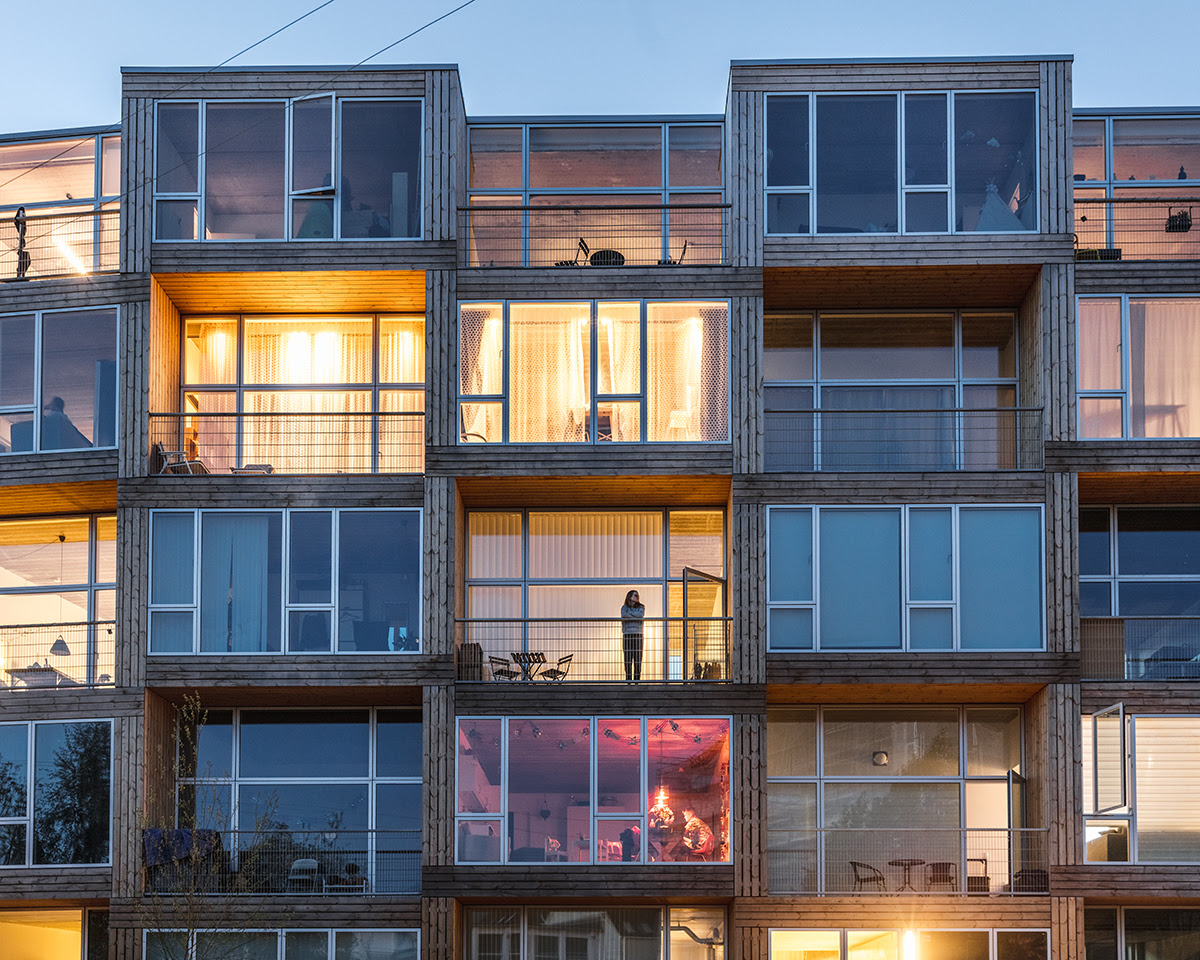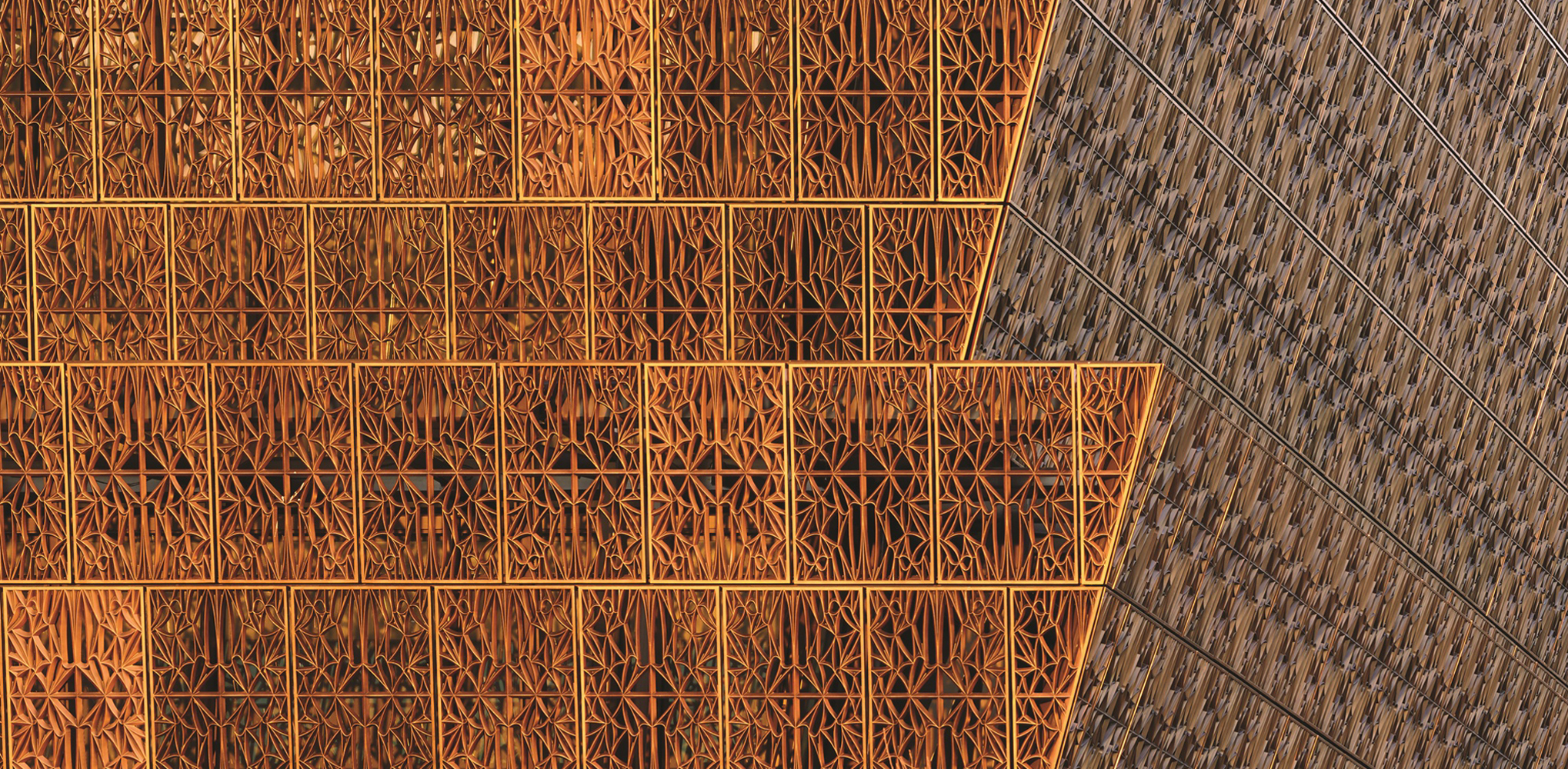Last chance: The 14th Architizer A+Awards celebrates architecture's new era of craft. Apply for publication online and in print by submitting your projects before the Final Entry Deadline on January 30th!
What exactly unfolded when Bjarke Ingels Group, Jan Gehl, and Danish non-profit housing association Lejerbo, pooled their efforts to create an affordable housing development in the heart of Denmark?
With BIG offering expertise in bold architectural form, Jan Gehl specializing in people-centered urban design and Lejerbo joining the two, it could only be expected that the result would provoke new ideas, questions and conversations.
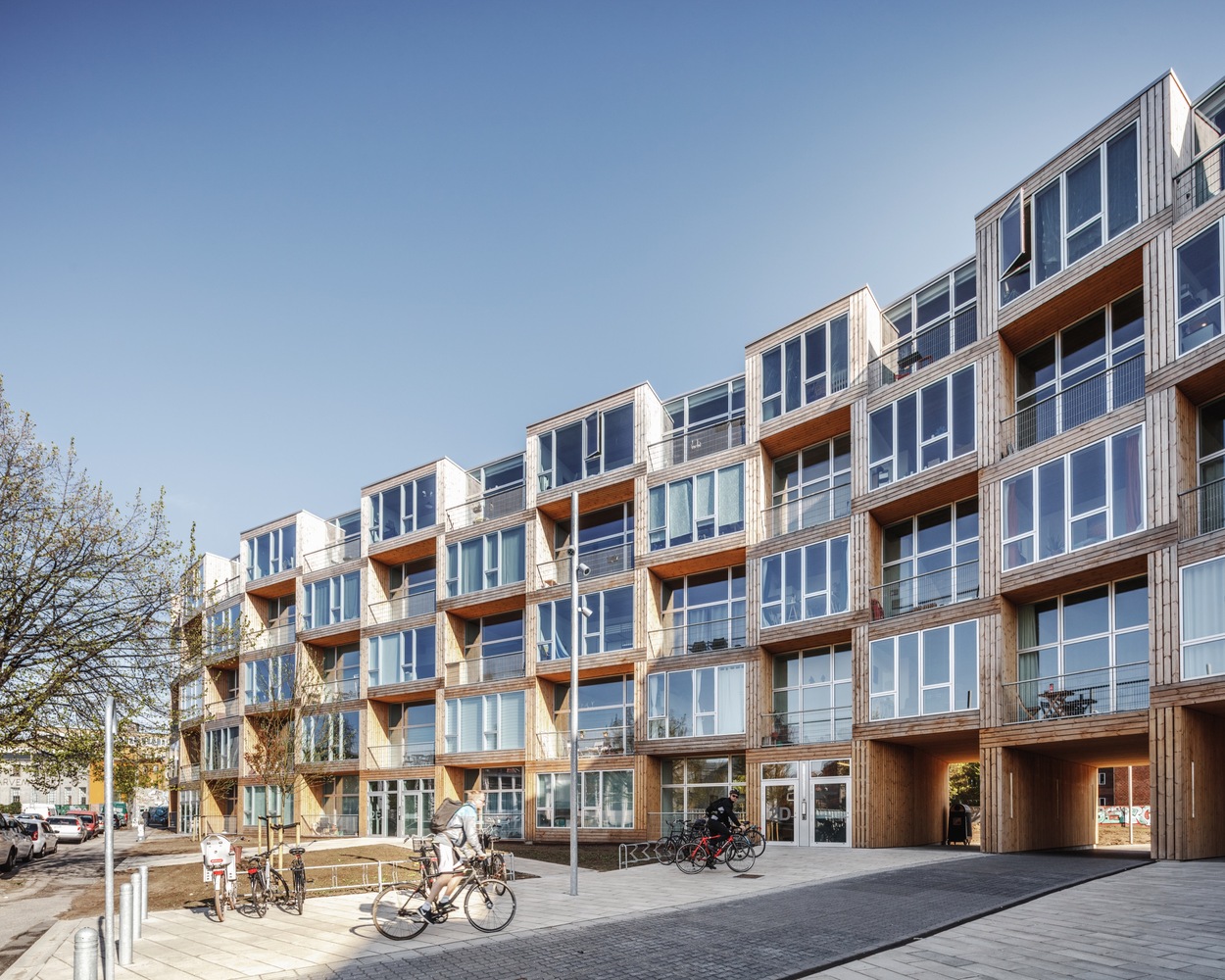
Image via ArchDaily by Rasmus Hjortshøj
Located in northwest Copenhagen, Dortheavej Residence is a 5-storey building that provides 66 new homes for low-income residents, with each unit ranging between 60 and 115-square-meters in total area. Additionally, each unit boasts 3.5-meter high ceilings, floor-to-ceiling windows, and a south-facing balcony, making them both spacious and open for natural illumination.
To build Dortheavej Residence, BIG stacked prefabricated modules on top of one another in a repeated pattern, only high enough to match the height of the surrounding buildings in the area. According to BIG, the historical Copenhagen neighborhood is characterized by car repair shops and other industrial buildings from the 1930s, 40s, and 50s; therefore, to build any higher would prove out of sync with the existing vernacular.
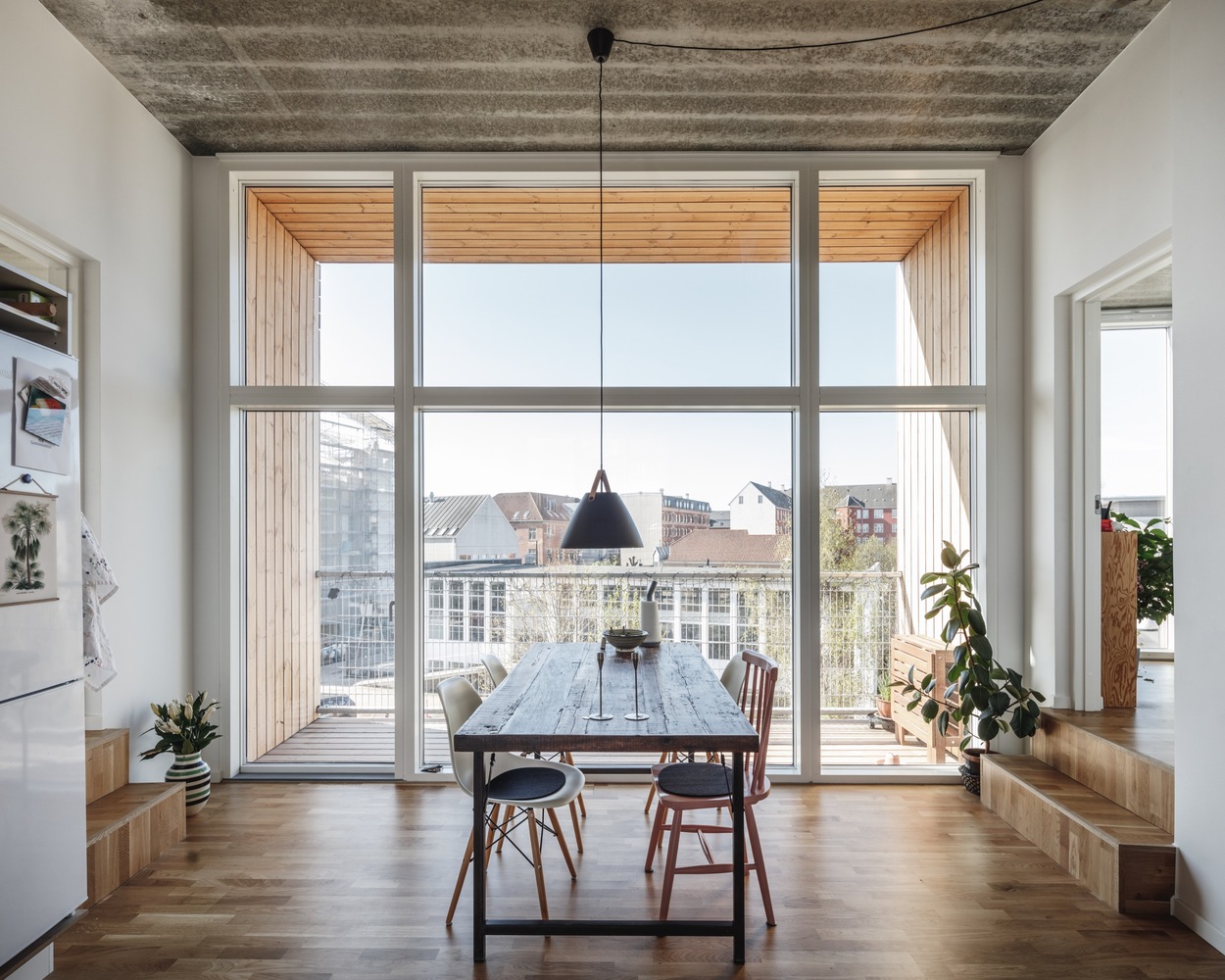
Image via ArchDaily by Rasmus Hjortshøj
Designed to look like a checkerboard, this modular approach to construction is central to the success of this project. “Affordable housing is an architectural challenge due to the necessary budget restrictions,” said Bjarke Ingels, Founding Partner of BIG. “We have attempted to mobilize modular construction with modest materials to create generous living spaces at the urban as well as the residential scale. The prefabricated elements are stacked in a way that allows every second module an extra meter of room height, making the kitchen-living areas unusually spacious.”
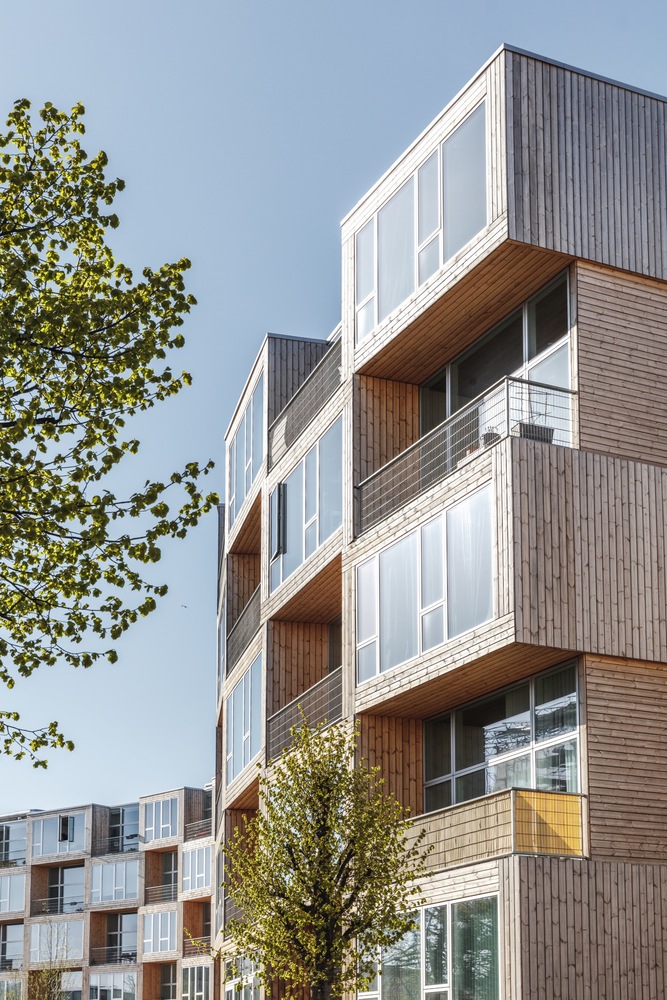
Image via ArchDaily by Rasmus Hjortshøj
The south-facing façade is highly punctuated, harnessing floor-to-ceiling glazing and retreated balconies that alternate across the length of the building, to inject the structure with visual depth. In contrast, the north-facing façade is even, designed with simplicity in mind to contrast the building’s highly textural appearance on the opposite side.
Long wooden planks cover the modules on all sides of the building, which alternate in orientation to accentuate the checkered pattern and draw attention to the boundaries of each module.
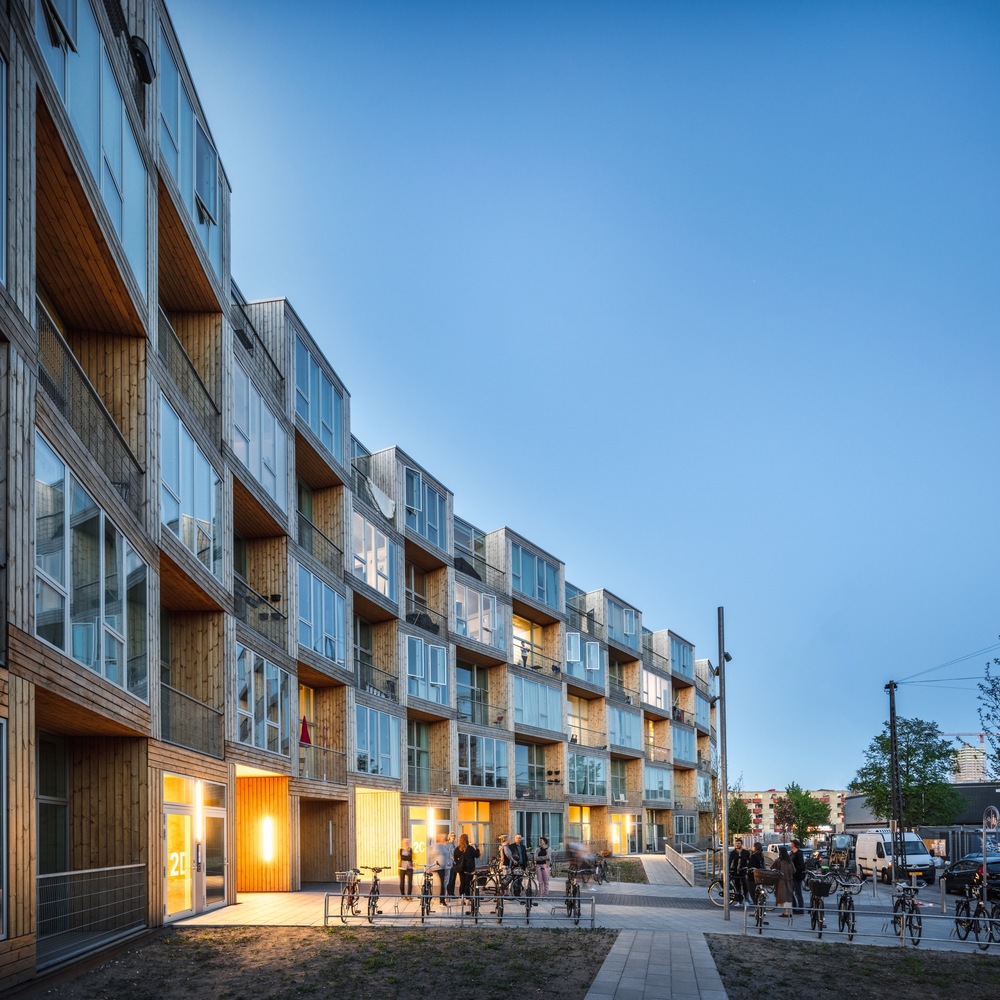
Image via ArchDaily by Rasmus Hjortshøj
For this project, BIG was specifically asked to keep the previously existing pedestrian passageways open and the adjacent green yard untouched. In response, the horizontal building curves inwards on the south-facing side, creating a natural entranceway and public square in the front and a large secluded garden and courtyard in the back. Additionally, the square created by the building’s curve will be landscaped with cherry trees and extensive bicycle parking — the preferred way to get around the city of Copenhagen.
At the base of the building, three large openings — each one the size of a single prefabricated module — create passageways that lead residents through to the garden.
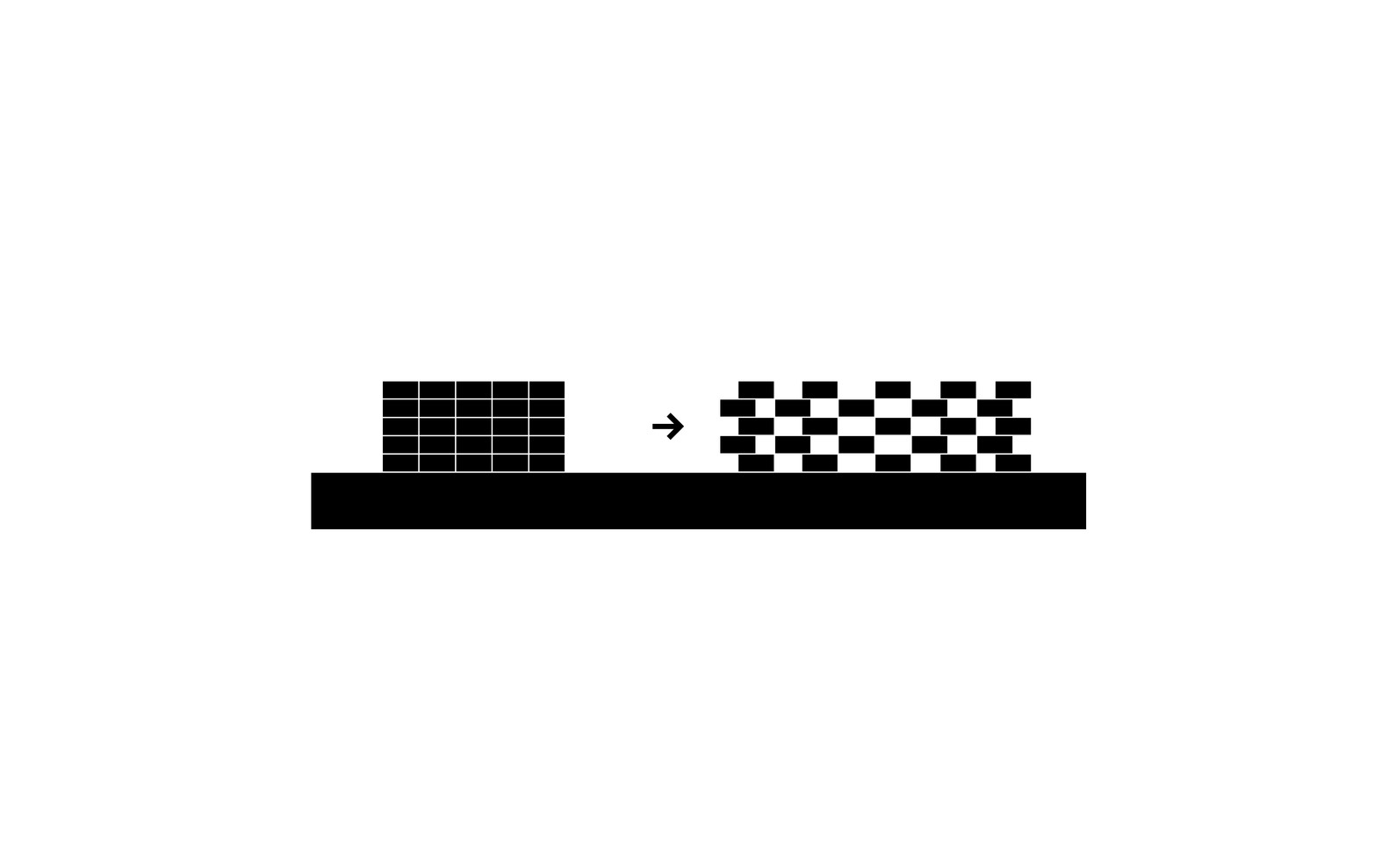
Diagram via ArchDaily
“By gently adjusting the modules, the living areas open more towards the courtyard while curving the linear block away from the street to expand the sidewalk into a public square,” said Bjarke Ingels. “Economical constraints often lead to scarcity — at Dortheavej, we have managed to create added value for the individual as well as the community.”
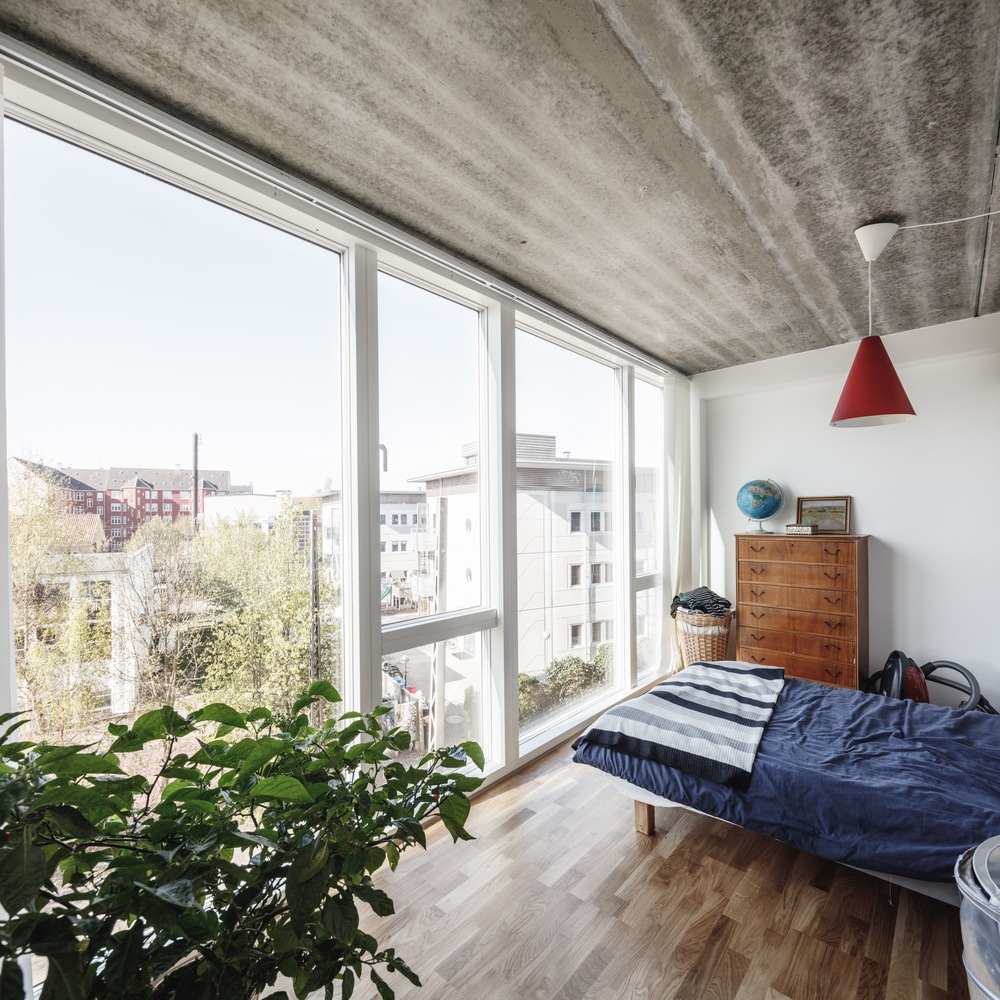
Image via ArchDaily by Rasmus Hjortshøj
BIG has already received the Lille Arne Award for Dortheavej Residence — a prize awarded by the Danish Association of Architects that recognizes exceptional housing projects.
According to Jan Hyttel, President at Lejerbo, “Our ambition was to create affordable apartments by the world’s leading architects. Together with BIG, we have succeeded in creating sustainable, safe and functional homes that see eye to eye with the people who live in them.”
Last chance: The 14th Architizer A+Awards celebrates architecture's new era of craft. Apply for publication online and in print by submitting your projects before the Final Entry Deadline on January 30th!
